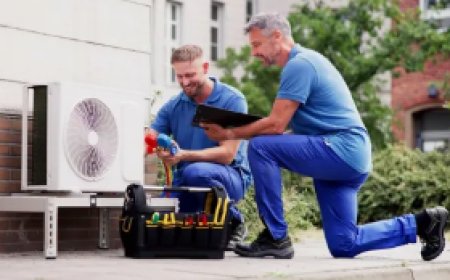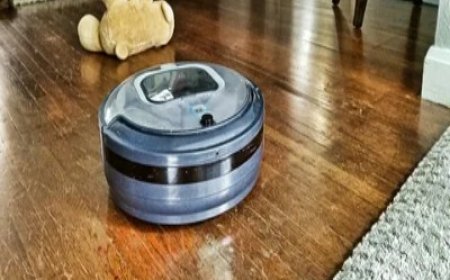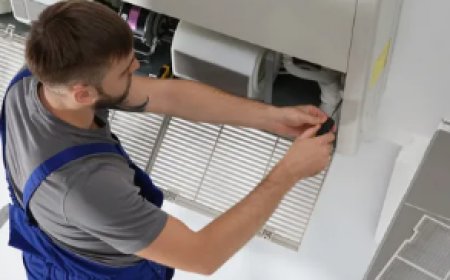How to Set Up and Use a Hot Cold Therapy Machine at Home
In the realm of modern pain management and physical therapy, hot cold therapy machines have emerged as essential devices for accelerating recovery and relieving discomfort from injuries, surgeries, and chronic conditions. Whether you're recovering from a knee replacement, managing arthritis, or soothing muscle soreness after an intense workout, these machines offer an efficient and convenient way to apply temperature-based therapy without relying on manual methods like ice packs or heating pads.
Understanding how to set up and use a hot cold therapy machine at home can maximize its benefits while ensuring safety and optimal functionality. In this guide, well explore the setup process, the correct usage techniques, and essential maintenance practices, all from the comfort of your living space.
What is a Hot Cold Therapy Machine?
A hot cold therapy machine, sometimes referred to as a contrast therapy device, is a motorized or gravity-fed system designed to deliver controlled heat or cold to specific parts of the body. It typically includes a control unit, insulated tubing, a wrap or pad that conforms to the target area, and a reservoir for water and ice. Some advanced models allow you to switch between hot and cold modes automatically, enabling contrast therapy to stimulate blood flow and reduce inflammation.
Healthcare professionals frequently recommend these machines post-surgery (such as after ACL reconstruction or joint replacement) or for chronic ailments like tendonitis and lower back pain. Their consistent temperature output and hands-free operation make them a preferred choice for home therapy.
Setting Up Your Machine: Step-by-Step
Knowing how to set up and use a hot cold therapy machine properly starts with understanding its components and reading the user manual provided by the manufacturer. Each model may vary slightly, but most follow a similar structure in terms of setup.
Begin by placing the main control unit on a flat surface near an electrical outlet. Ensure that the area is dry and free from foot traffic to prevent accidents or tipping. Connect the insulated tubing from the unit to the therapy pad or wrap, ensuring a tight seal to prevent leaks. Many pads have universal connectors, but its best to double-check compatibility before setup.
Next, fill the machines reservoir with the appropriate contents. For cold therapy, you'll typically use a mix of cold water and ice to bring the temperature down efficiently. Some machines require distilled water only, especially those designed for heat therapy, to avoid mineral buildup inside the tubing.
Once filled, plug in the device and select your desired therapy mode (hot or cold). If the machine includes temperature and time controls, set them according to your doctors recommendation. Usually, sessions last between 15 and 30 minutes, but durations can vary depending on the condition being treated.
Before starting, position the therapy pad on the target body part. Secure it using straps or Velcro provided. Make sure the pad lies flat and does not create pressure points, especially around joints. Once everything is in place, switch the unit on and monitor for proper water flow and temperature regulation.
Using the Machine Safely and Effectively
Understanding how to use a hot cold therapy machine effectively involves more than just pressing the start button. For safe home use, its crucial to follow certain guidelines.
Always monitor skin condition during treatment to avoid burns or frostbite. While most therapy pads are designed to be used with a barrier such as a cloth or thin garment between the skin and pad, this step is sometimes overlooked. Never apply a therapy pad directly to damaged or irritated skin.
Keep the machine away from children and pets. The tubing and power cord pose tripping hazards, and accidental tampering with settings could lead to injury. Additionally, ensure the machine is turned off and unplugged when not in use.
Use the device only as directed. Do not exceed the recommended session times, as extended exposure to heat or cold may result in tissue damage. Consult your healthcare provider if you experience increased pain, swelling, or numbness during or after therapy.
Cleaning and disinfecting your machine after each use is essential. Drain the reservoir, detach the tubing and pad, and use a mild soap solution to clean all surfaces. Allow the components to air-dry completely before reassembling and storing the unit.
Benefits of At-Home Hot Cold Therapy
Hot cold therapy at home provides a range of advantages, particularly when convenience and consistent treatment are important. Unlike ice packs that lose effectiveness as they warm or heating pads that can overheat, a hot cold therapy machine offers stable, customizable temperatures for targeted treatment.
Cold therapy, or cryotherapy, helps reduce inflammation and numb sore tissues, which is especially beneficial post-surgery or after acute injuries. Heat therapy, on the other hand, improves blood flow and flexibility, making it ideal for chronic stiffness or muscular tightness.
When used in alternating sessions, known as contrast therapy, these machines can stimulate circulation and accelerate recovery. For athletes and active individuals, incorporating this routine into post-exercise recovery can help minimize downtime and improve performance.
Common Mistakes to Avoid
Improper use of a hot cold therapy machine can limit its effectiveness or, worse, lead to injuries. One common mistake is using tap water instead of distilled water in machines that require it. Minerals in tap water can cause scale buildup, reducing machine lifespan and efficiency.
Another frequent issue is overuse. While it might be tempting to run multiple sessions in a row to relieve pain, prolonged exposure to cold or heat can cause skin and nerve damage. Always adhere to guidelines from your medical provider and take adequate breaks between sessions.
Failing to clean the machine regularly can lead to bacteria or mold growth, especially in the moist environment of the tubing and reservoir. Even if the device looks clean externally, internal buildup can compromise hygiene and performance.
Who Should Use a Hot Cold Therapy Machine?
These machines are suitable for a wide range of users. Post-operative patients recovering from orthopedic surgeries often benefit the most, especially in the critical early stages of healing. Individuals with chronic joint pain, such as osteoarthritis, or those managing repetitive strain injuries like carpal tunnel syndrome may also find regular use helpful.
However, certain individuals should consult a physician before use. Those with circulation disorders, diabetes, or skin sensitivity should exercise caution, as improper use can exacerbate existing conditions. Pregnant women should also speak with a healthcare provider before beginning therapy.
Final Thoughts
Knowing how to set up and use a hot cold therapy machine at home is a practical skill that can significantly enhance your recovery experience. With the right machine and consistent, correct usage, you can take control of your pain management without frequent clinic visits or medication reliance.
Investing in a reliable hot cold therapy machine not only improves physical comfort but also fosters independence in managing your health. By following proper setup procedures, understanding safe operation, and maintaining your device diligently, you can ensure it remains a valuable part of your wellness routine.
As with any therapeutic device, always consult a medical professional to tailor treatment to your specific condition and needs.










































